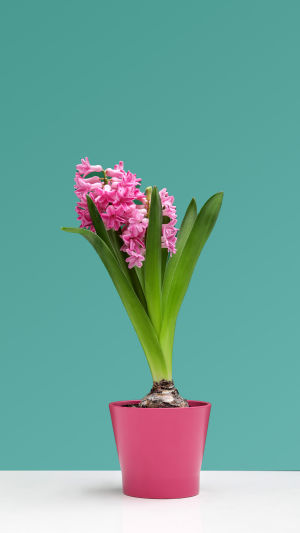As winter's grip begins to wane and the first signs of spring peek through the thawing ground, a spectacular transformation takes place in gardens and parks around the world.
One of the most eagerly anticipated heralds of this changing season is the hyacinth, a flowering plant renowned for its vibrant colors, captivating fragrance, and cultural significance.
With its history dating back to ancient times and its enduring popularity, the hyacinth has rightfully earned its place as a beloved emblem of spring's rejuvenation.
A Brief History and Origins
The hyacinth (Hyacinthus orientalis) traces its origins to the Eastern Mediterranean region, where it has been cultivated for centuries.
The tragic tale of Hyacinthus, who was accidentally struck by a discus thrown by Apollo, has been immortalized through this flower.
Enchanting Varieties and Colors
Hyacinths are known for their characteristic dense spikes of fragrant, bell-shaped flowers that cluster atop sturdy stems. These blooms are available in a captivating range of colors, including shades of blue, purple, pink, white, and even yellow. The wide spectrum of hues allows gardeners and floral enthusiasts to create breathtaking displays and arrangements that embody the essence of spring.
Cultural Symbolism
Beyond their aesthetic charm, hyacinths hold cultural significance across various societies. For instance, the hyacinth is associated with the New Year celebration and symbolizes the rebirth and renewal that accompany the arrival of spring.
In the language of flowers, known as floriography, hyacinths convey messages of constancy, sincerity, and a playful sporty attitude.
Cultivation and Care
Cultivating hyacinths is a rewarding endeavor that requires attention to detail and a bit of patience. These spring-blooming bulbs are typically planted in the fall before the ground freezes.
They prefer well-drained soil and a sunny location, although they can also thrive in partial shade. As the flowers bloom early in the season, they provide a splash of color and fragrance when most other plants are still awakening from their winter slumber.
Fragrant Elegance
The intoxicating fragrance of hyacinths sets them apart from many other spring flowers. Their sweet, lingering scent fills the air and can transform a garden into a sensory paradise. Whether planted en masse in flower beds, potted for indoor enjoyment, or given as gifts, hyacinths have an unparalleled ability to captivate with both their visual beauty and their aromatic allure.
As winter recedes and the natural world reawakens, the hyacinth emerges as a radiant symbol of hope, beauty, and renewal. With its captivating history, enchanting variety of colors, and intoxicating fragrance, this springtime blossom holds a cherished place in gardens, cultures, and hearts around the world.
Whether admired in a well-tended garden or brought indoors to brighten a space, the hyacinth is a timeless reminder that even in the coldest of seasons, the promise of spring's splendor is just around the corner.





